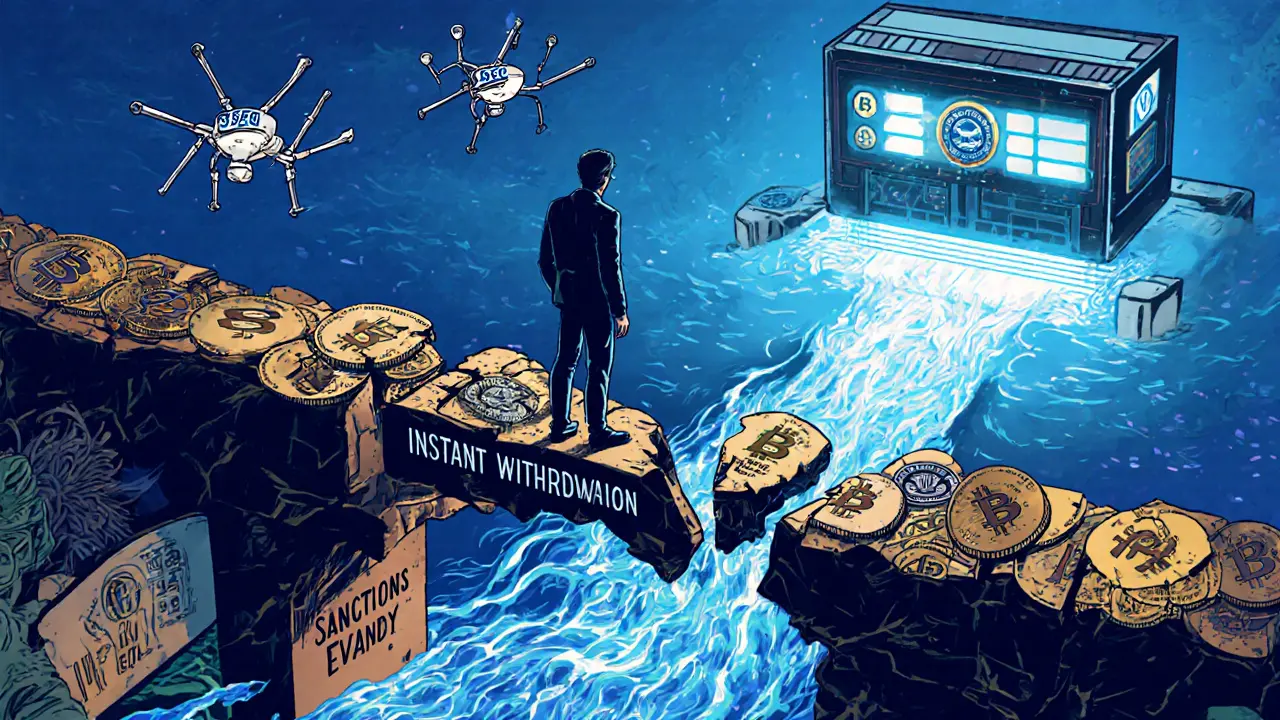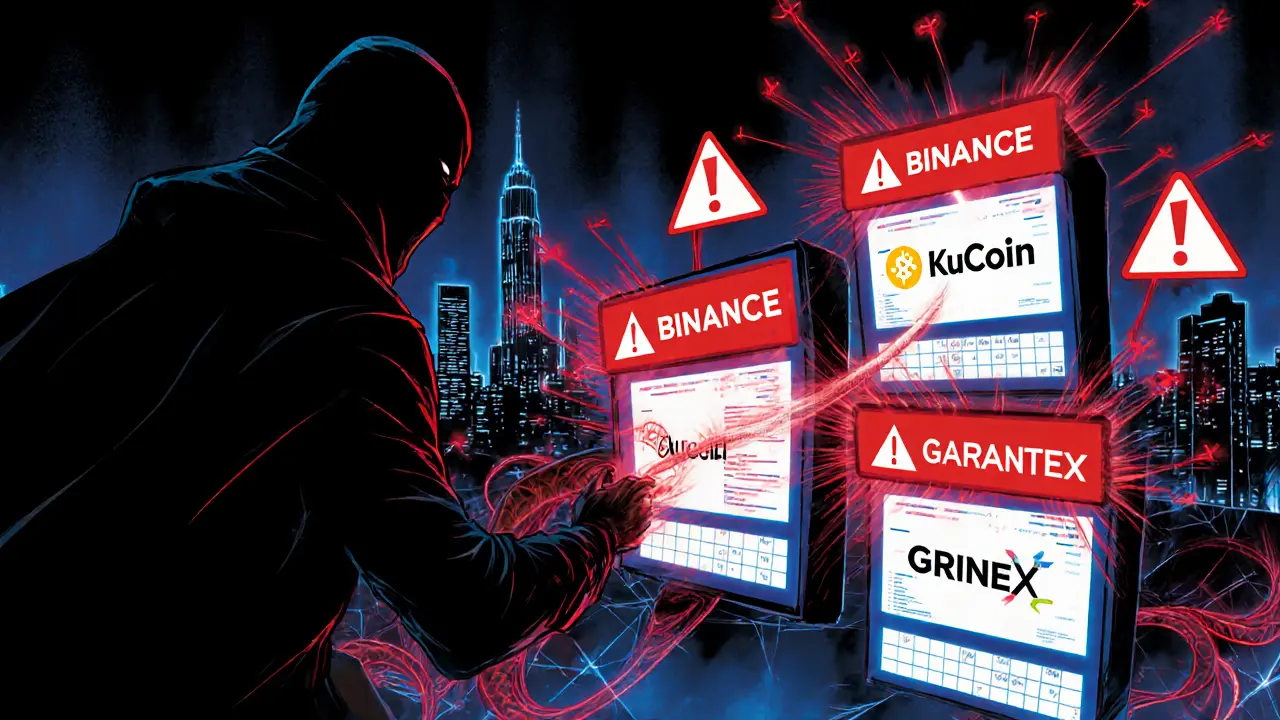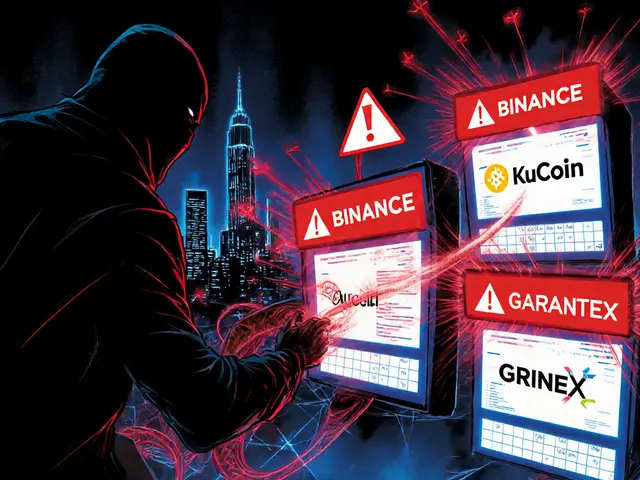Crypto Wallet Sanctions Checker
Check Your Wallet Address
Enter any Ethereum wallet address to see if it's linked to sanctions evasion or suspicious activity.
Results
Wallet addresses are checked against public sanctions lists and blockchain analytics data. This tool does not provide legal advice.
Example of risky behavior: "Moving large amounts between exchanges to avoid transaction tracking" as described in the article.
Many people think using multiple crypto exchanges is a smart way to get around limits-like trading caps, geographic blocks, or account freezes. But what sounds like a clever workaround often turns into a legal minefield. In 2025, regulators aren’t just watching-they’re actively shutting down platforms that help users bypass rules. If you’re considering hopping between exchanges to keep trading, you need to know what’s really at stake.
Why People Try to Avoid Exchange Restrictions
People turn to multiple exchanges for different reasons. Some live in countries where major platforms like Binance or Coinbase don’t operate. Others hit daily withdrawal limits on one exchange and want faster access to their funds. A few are trying to dodge taxes or hide transactions from authorities. Whatever the reason, the goal is usually the same: move crypto without being tracked or blocked. But here’s the problem: every time you move crypto from one exchange to another, especially if you’re avoiding KYC, you’re creating a trail. And those trails don’t disappear just because you switch platforms.How Nested Exchanges Work (and Why They’re Dangerous)
One of the most common tools people use is a nested exchange. These aren’t real exchanges-they’re middlemen. You deposit money into them, and they trade on your behalf using accounts on bigger platforms like Kraken or KuCoin. To you, it looks like you’re trading directly. In reality, you’re handing over control of your funds to someone else. Nested exchanges often skip KYC completely. That sounds convenient, but it’s a red flag. Legitimate platforms verify your identity because they’re required to. If a service lets you trade instantly without ID, it’s not being helpful-it’s being risky. These platforms are frequently used by criminals to launder money, process ransomware payments, or move funds from sanctioned entities. In March 2025, U.S. authorities shut down Garantex, a Russian-based exchange linked to sanctions evasion. Within days, its operators launched Grinex, a new platform with the same team, same infrastructure, and the same goal: keep moving money despite sanctions. Grinex openly advertised itself as a replacement for Garantex. Within months, it handled billions in transactions before being designated by OFAC. This isn’t an isolated case. It’s a pattern.Decentralized Exchanges Aren’t a Safe Haven
Some users think switching to decentralized exchanges (DEXs) like Uniswap or PancakeSwap solves the problem. After all, they don’t ask for ID. But DEXs aren’t magic shields. While they don’t require KYC, they still run on public blockchains. Every transaction is recorded forever. Law enforcement doesn’t need to know who you are-they just need to trace the flow. If your crypto came from a sanctioned wallet, or if you’re moving large amounts through multiple DEXs in quick succession, blockchain analytics firms like Chainalysis or Elliptic will flag it. Regulators don’t need to shut down the DEX-they just need to freeze the wallets at the end of the chain. Your funds disappear, and you have no recourse.Red Flags You Can’t Ignore
Here are five signs you’re dealing with a risky platform:- No KYC or ID verification - If you can trade $50,000 without submitting a passport, walk away.
- Instant withdrawals - Legitimate exchanges often delay withdrawals for security checks. If funds appear in your wallet within minutes, it’s a warning.
- Hidden ownership - Can’t find who runs the company? No legal address? No contact info? That’s not privacy-it’s secrecy.
- Too-good-to-be-true fees - If they charge 0.1% when everyone else charges 0.5%, they’re making up the difference elsewhere-probably with your funds.
- Users complain about frozen assets - Check Reddit, Twitter, or Telegram groups. If people say, “I deposited and never got my money back,” don’t ignore it.
The Legal Consequences Are Real
You might think, “I’m not a criminal. I’m just trying to trade.” But the law doesn’t care about your intent. If you knowingly use a platform that’s been designated by OFAC-or if your transactions match the pattern of sanctions evasion-you can be held responsible. The SEC has made it clear: any platform that matches buyers and sellers automatically qualifies as an exchange under U.S. law. If it’s not registered, it’s operating illegally. And if you use it, you’re part of the problem. In 2024, a New Zealand resident was fined $45,000 for using a non-KYC exchange to move crypto linked to a darknet marketplace. He claimed he didn’t know the funds were illegal. The court didn’t accept that excuse. Ignorance isn’t a defense when the red flags were obvious.
What You Should Do Instead
If you’re restricted by one exchange, here are legal alternatives:- Use a regulated exchange that supports your country - Many platforms like Kraken, Bitstamp, and Independent Reserve operate in over 100 countries with full compliance.
- Apply for higher limits - Most exchanges let you upgrade your account with additional verification. It takes time, but it’s safe.
- Use a hardware wallet - Store your crypto offline and trade only when you’re on a compliant platform. You keep control.
- Wait for regulatory clarity - Countries like New Zealand, Singapore, and Switzerland are building clear frameworks. Patience pays off.
The Bigger Picture: Why This Arms Race Won’t End
Criminals keep finding new ways to hide money. Regulators keep finding new ways to catch them. In 2025, we’re seeing the rise of ruble-backed tokens like A7A5, created by Kyrgyzstani firms to bypass sanctions. These aren’t just crypto-they’re digital tools designed for evasion. But here’s the truth: every time a new evasion method appears, regulators respond with better tracking tools, tighter international cooperation, and harsher penalties. The gap between criminals and enforcers is shrinking, not growing. If you’re using multiple exchanges to avoid restrictions, you’re not outsmarting the system. You’re betting your money-and possibly your freedom-on a system that’s already been cracked.What Happens If You Get Caught?
There’s no single answer-it depends on your country, the amount, and whether you knowingly broke the law. But here’s what’s happened to others:- Fines up to $100,000 for unlicensed crypto activity
- Asset seizure-your crypto gets frozen permanently
- Criminal charges for violating sanctions (even if you didn’t know the source)
- Bank account freezes and travel restrictions
Is it illegal to use multiple crypto exchanges?
It’s not illegal to use more than one exchange. Many traders do it to access different coins or better prices. But it becomes illegal when you use them to hide the source of funds, avoid KYC checks, or bypass sanctions. The difference isn’t how many exchanges you use-it’s why you’re using them.
Can I get my money back if a nested exchange freezes my funds?
Almost never. Nested exchanges aren’t regulated, so they don’t have to follow consumer protection rules. If they disappear, shut down, or freeze your account, you have no legal recourse. Your funds are gone, and no government agency will recover them for you.
Do I need to report crypto trades between exchanges on my taxes?
Yes. In most countries, trading one crypto for another is a taxable event. Even if you’re moving between exchanges, you’re still selling one asset and buying another. Failing to report these trades can lead to penalties, audits, or criminal charges for tax evasion.
Are decentralized exchanges safer than centralized ones?
They’re safer in terms of custody-you keep your keys. But they’re not safer from a legal standpoint. All transactions are public. If you’re moving funds linked to illegal activity, blockchain analysts can trace you. DEXs don’t protect you from law enforcement-they just don’t help them either.
How do regulators track crypto moves across multiple exchanges?
They use blockchain analysis tools that track wallet addresses across platforms. Even if you swap Bitcoin for Monero and back, the original source can still be identified. Tools like Chainalysis, TRM Labs, and Elliptic map fund flows globally, linking transactions to known criminal wallets or sanctioned entities.
What should I do if I already used a non-compliant exchange?
Stop using it immediately. Move any remaining funds to a regulated exchange with full KYC. Keep records of all transactions. If you’re unsure whether you violated any laws, consult a crypto-savvy lawyer before filing your taxes or making further moves. It’s better to fix it now than wait for a notice from authorities.


